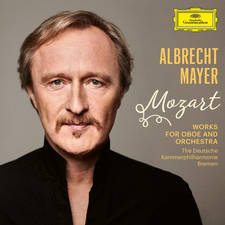Beethoven: The Piano Concertos
Beethoven composed several concertos during his teens – the piano score of a complete concerto in E flat dating from 1784 is the only one to have survived. But it is the five piano concertos he wrote between 1795 and 1809 that have been beloved by pianists and audiences alike for over 200 years.
The one we know as No.2, since it was the second to be published, was actually the first of the five to be written. Yet, though Beethoven began sketching ideas for it as early as 1787, the final version did not appear for another 22 years. The work was completed by 1792 but he then became dissatisfied with it, rewrote two movements in 1795, completed another version in 1798, revised that in 1801 and finally sent it to the publishers. His ‘official’ cadenza for the first movement (up till then, he and other performers had improvised their own) followed in 1809. You can hear how the cadenza, not surprisingly, is far more advanced and Romantic in style.
Well before his Piano Concerto No.1 was composed, Beethoven had won a great reputation as a keyboard improviser of genius and as possessing an original and imaginative musical intellect of great emotional power. In the First all these facets are on display. Listen to the self-assured opening contrasted with the gentle charm of the second theme, to the Mozartian grace of the Largo and to the Rondo finale, arguably the merriest of any Beethoven concerto movement.
Beethoven was well aware that his next piano concerto (No.3) was a huge advance on the earlier two and withheld it from immediate publication. As he said, "Musical policy necessitates keeping the best concertos to oneself for a while."
Audiences and critics, expecting another "classical" concerto, did not take to it at first, for the writing was symphonic in scale, the piano had been given a new independence of thought and motion, and some of the keys into which the music drifted were, to Beethoven’s contemporaries, surprising. A concerto in C minor with a slow movement (and part of the finale) in the remote key of E major? This was very avant-garde when Beethoven premiered it in 1803.
If No.3 was different from its predecessors, it was nothing compared with the gap between that and No.4, considered by many to be the greatest of the five. To begin a concerto with a hushed statement from the piano was a bold and novel idea, while the slow movement is a philosophical dialogue between piano and orchestra – one of the most beautiful movements in the concerto literature.
Beethoven’s final piano concerto is imperious and noble in character, but its nickname the ‘Emperor’ would have infuriated its republican composer. Once again, Beethoven challenges preconceptions by having no orchestral introduction – the piano crashes in with a powerful chord underpinned by the orchestra – and, in the slow movement, uses just one theme instead of several. This is cleverly linked, without pause, to the rollicking finale in which Beethoven finds time to quote a popular folk tune of the day!
Though he lived for a further 18 years, Beethoven never returned to the concerto form. He played his Fourth in public (1808) but not the ‘Emperor’, which received its premiere in 1810 by a pianist called Friedrich Schneider. By then, Beethoven had become too deaf to continue as a virtuoso and, in his isolated, inner world, he found that other musical forms now gave him richer opportunities for the ideas he wanted to express.
THE PERFORMER’S VIEW
Yevgeny Sudbin on Beethoven’s piano concertos.
It’s a difficult undertaking to record all five concertos when there are so many fantastic recordings of the past. I try not to think about it! All five are challenging to play and different in character. Of the earliest ones, No.3 is the most straightforward, No.1 is the trickiest and, like No.2, has many humorous moments.
My big problem with No.1 is choosing which cadenza to play. I must have listened to 40 by different composers! I’m not happy with any of them and none of the three that the composer wrote is satisfactory.
The Fourth is the one I feel very close to. The writing is marvellous, but the opening is one of the most difficult of any piano concerto!
The Fifth is probably the hardest technically; and the hardest to play convincingly. It’s a majestic piece but has many introspective moments. I’m a little sick of testosterone-loaded performances of No.5. You have to find a balance between the grandeur and the introspection of the music.
TOP FIVE RECORDINGS
Top Choice…
Stephen Kovacevich (pf), BBC SO, LSO/Colin Davis
There are few artists’ recordings of all five concertos that satisfy in all 15 movements. But if you want the closest thing to perfection go for Kovacevich’s classic early 1970s versions.
Philips 475 6319
Also consider…
Wilhelm Kempff (pf), Berlin Phil/ van Kempen
This 1953 set with the Berlin Phil is another classic. Wilhelm Kempff’s affection for the music is palpable.
DG 435 7442
Alfred Brendel (pf), Vienna Phil/Rattle
Brendel recorded the cycle four times. This last combines all the intellectual rigour and pianistic finish of the earlier versions with vigour and freshness.
Philips 462 7812
Ronald Brautigam (pf), Norrköping SO/Parrott
For the best period-instrument recording there is no contest. Brautigam brings an excitement and probing musicality to the music that others cannot match.
BIS BIS-SACD-1792, 1693, 1692
Artur Schnabel (pf), LSO, LPO/Sargent
Though recorded in the 1930s, often idiosyncratic and without benefit of modern scholarship, Schnabel offers insight and understanding.
Naxos 8.110638-40


























